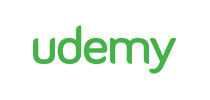1. Read this Before Watching the Next Lesson.html
2. Setting up AWS Step Function
3. Verify that CloudFormation has worked
4. Configure Batch Transform Lambda Part 1
5. Configure Batch Transform Lambda Part 2
6. Create Check Batch Transform Job Lambda
7. Fixing typos and Syntax Erros
8. JSON output Format
9. Creating Cleaning Batch output Lambda Function Part 1
10. Creating Cleaning Batch output Lambda Function Part 2
11. Configuring our Step Function Part 1
12. Configuring our Step Function Part 2
13. Configuring our Step Function Part 3
14. Upload Test Data to S3
15. Testing our Step Function
16. Fixing Errors
17. Testing our Step Function with the Corrections
18. Verifying that our Step Function Ran Successfully
19. Donwloading our JSON file from S3
20. Using Event Bridge to set up Cron Job for our Machine Learning Pipeline
21. Verify that the Cron Job works
22. Verifying that our Pipeline Ran Successfully
23. Setting up Production Notebook
24. Extending Our Machine Learning Pipeline
25. Coding our Process Job Notebook Part 1
26. Coding our Process Job Notebook Part 2
27. Coding our Process Job Notebook Part 3
28. Coding our Process Job Notebook Part 4
29. Verifying that the Images have been Saved Properly.html
30. Productionizing our Notebook Part 1
31.1 Link to the Trust Policy.html
31. Productionizing our Notebook Part 2
32. Verify that the Entire Machine Learning Pipeline works
33. Deleted Unused items from Sagemaker EFS

